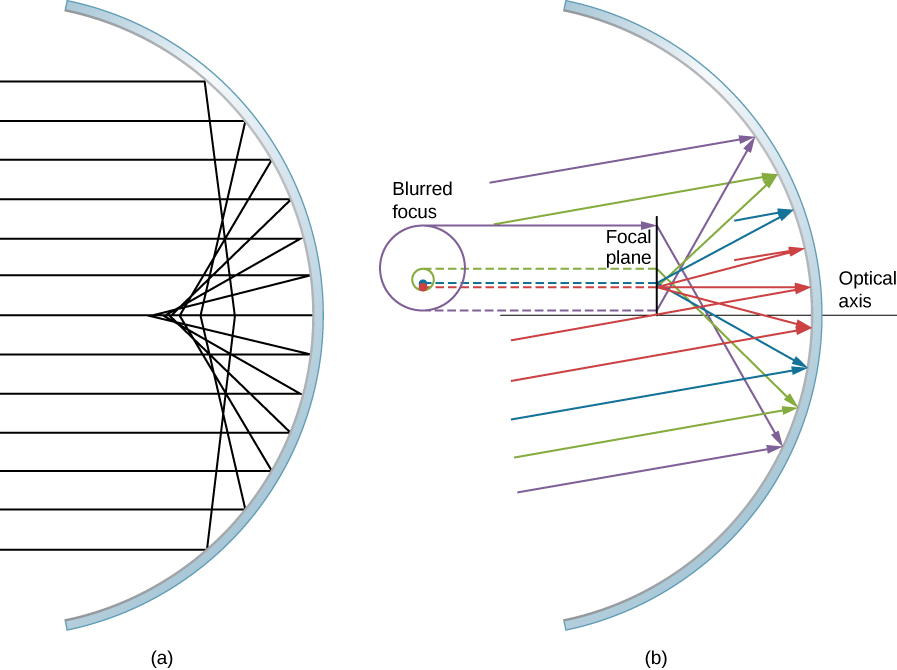| << Chapter < Page | Chapter >> Page > |
Step 1. First make sure that image formation by a spherical mirror is involved.
Step 2. Determine whether ray tracing, the mirror equation, or both are required. A sketch is very useful even if ray tracing is not specifically required by the problem. Write symbols and known values on the sketch.
Step 3. Identify exactly what needs to be determined in the problem (identify the unknowns).
Step 4. Make a list of what is given or can be inferred from the problem as stated (identify the knowns).
Step 5. If ray tracing is required, use the ray-tracing rules listed near the beginning of this section.
Step 6. Most quantitative problems require using the mirror equation. Use the examples as guides for using the mirror equation.
Step 7. Check to see whether the answer makes sense. Do the signs of object distance, image distance, and focal length correspond with what is expected from ray tracing? Is the sign of the magnification correct? Are the object and image distances reasonable?
The small-angle approximation is a cornerstone of the above discussion of image formation by a spherical mirror. When this approximation is violated, then the image created by a spherical mirror becomes distorted. Such distortion is called aberration . Here we briefly discuss two specific types of aberrations: spherical aberration and coma.
Consider a broad beam of parallel rays impinging on a spherical mirror, as shown in [link] .

The farther from the optical axis the rays strike, the worse the spherical mirror approximates a parabolic mirror. Thus, these rays are not focused at the same point as rays that are near the optical axis, as shown in the figure. Because of spherical aberration , the image of an extended object in a spherical mirror will be blurred. Spherical aberrations are characteristic of the mirrors and lenses that we consider in the following section of this chapter (more sophisticated mirrors and lenses are needed to eliminate spherical aberrations).
Coma is similar to spherical aberration, but arises when the incoming rays are not parallel to the optical axis, as shown in part (b) of [link] . Recall that the small-angle approximation holds for spherical mirrors that are small compared to their radius. In this case, spherical mirrors are good approximations of parabolic mirrors. Parabolic mirrors focus all rays that are parallel to the optical axis at the focal point. However, parallel rays that are not parallel to the optical axis are focused at different heights and at different focal lengths, as show in part (b) of [link] . Because a spherical mirror is symmetric about the optical axis, the various colored rays in this figure create circles of the corresponding color on the focal plane.

Notification Switch
Would you like to follow the 'University physics volume 3' conversation and receive update notifications?